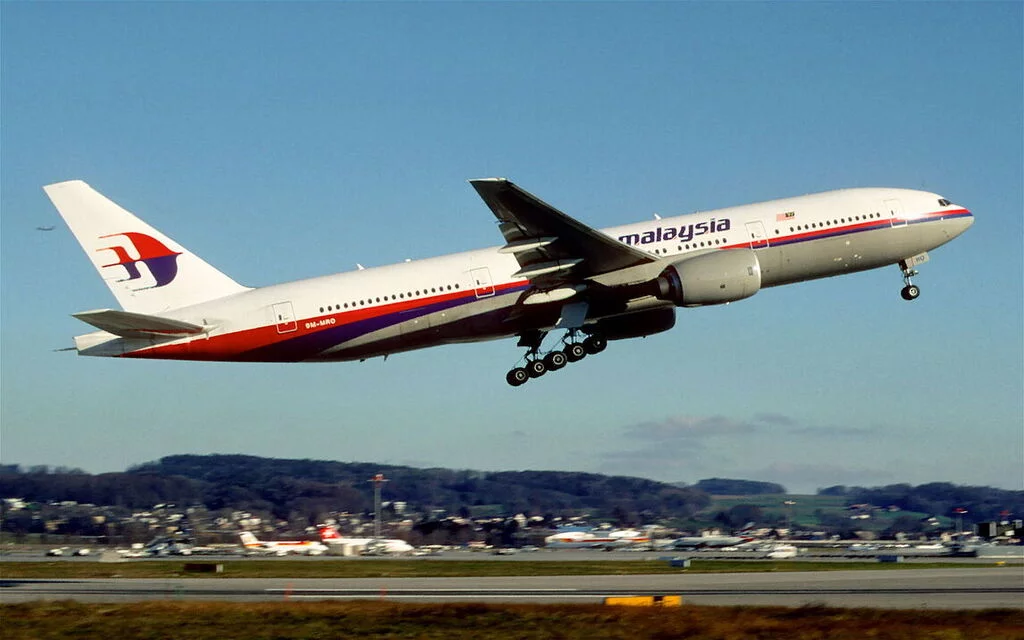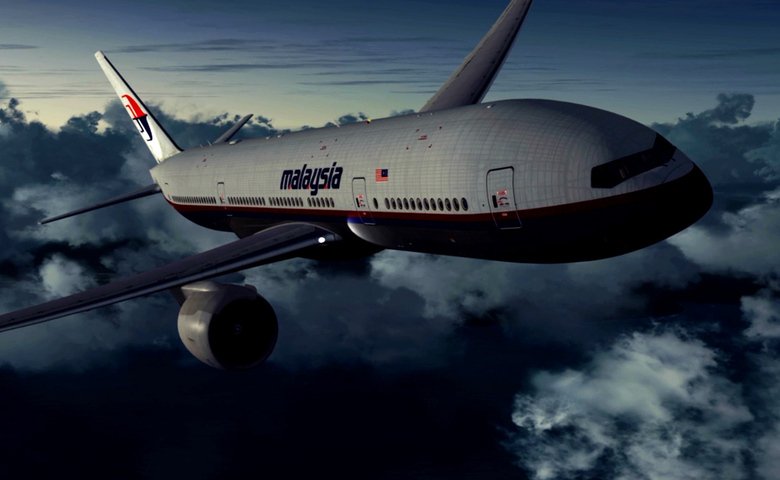The mystery surrounding the disappearance and what really happened to Malaysia Airlines Flight MH370 is one of the top aviation mysteries. After discovering no sign of the aircraft, Malaysia, China, and Australia suspended a two-year, A$200 million undersea search in the southern Indian Ocean in January 2017. The puzzle of what caused a commercial airline carrying hundreds of passengers to vanish without a trace. Here, we’ll talk about various conspiracies and theories to determine the truth about what really happened to Malaysia Airlines Flight MH370.
On March 8, 2014, at 12.42 am, Malaysia Airlines Flight MH370, carrying 239 passengers including 12 crew members, departed Kuala Lumpur for Beijing, China.
But when it flew over the South China Sea toward Beijing at 1.21 a.m., the aircraft lost touch with the Kuala Lumpur Area Control Center.
Before that, according to Malaysian police, the last spoken words from the aircraft were “Good night Malaysian three seven zero,” possibly from the captain or co-pilot.
When the fuel would have run out, the aircraft may have continued to fly for another seven hours, according to satellite pings.
The most likely crash site, according to experts, is around 1,000 miles west of Perth, Australia, but a thorough search of the area did not find any wreckage.
Table of Contents
The Disappearance of Malaysia Airlines Flight MH370

Here, we will explore in detail what really happened to Malaysia Airlines Flight MH370. A Malaysia Airlines Boeing 777-200ER departed Kuala Lumpur at 12:42 in the morning of March 8, 2014, turned toward Beijing and ascended to its designated cruising altitude of 35,000 feet. Malaysia Airlines’ abbreviation is MH. The flight had the 370 number. The pilot of the aircraft was the first officer, Fariq Hamid. He was 27 at the time. His final training flight before earning his full certification was this one. He was trained by the pilot in charge, Zaharie Ahmad Shah, one of Malaysia Airlines’ most senior captains at the age of 53.
There were ten Malaysian flight attendants in the cabin. They had 227 people, including 5 kids, to take care of. The majority of the passengers were Chinese; 38 of the remaining passengers were Malaysian, and the others were from other nations. That evening, Captain Zaharie ran the radio while First Officer Fariq piloted the aircraft. The configuration was typical. The signals from Zaharie were a little strange. He radioed that they had leveled off at 35,000 feet at 1:10 in the morning, which was unnecessary in radar-surveilled airspace where it is usual to report departing an altitude rather than arriving at one. The jet left Malaysia at 1:08 and began its journey across the South China Sea toward Vietnam. At 35,000 feet, Zaharie once more reported the plane’s level.
Eleven minutes later, the controller at Kuala Lumpur Center radioed, “Malaysian three-seven-zero, contact Ho Chi Minh one-two-zero-decimal-nine. The aircraft is approaching a waypoint near the beginning of Vietnamese air traffic jurisdiction. Good night. “Good night,” Zaharie said in response. Three-seven-zero Malaysian The broadcast sounded OK, but he neglected to read back the frequency as he ought to have. The world had not heard from MH370 since. Ho Chi Minh never received a verification from the pilots, and no further attempts to reach them were ever successful.
The sign for MH370’s transponder vanished from Malaysian air traffic control screens five seconds after it entered Vietnamese airspace, and the entire aircraft vanished from secondary radar 37 seconds later. It was 39 minutes after takeoff at 1:21 a.m.
Meanwhile, the Vietnamese air traffic controllers witnessed MH370 enter their territory before vanishing from the radar. They appear to have misread a contractual agreement that stated Ho Chi Minh was to notify Kuala Lumpur right away if an airplane that had been handed off was more than five minutes late checking in. They made numerous unsuccessful attempts to get in touch with the plane. 18 minutes had gone since MH370 vanished from their radar screens by the time they decided to contact Kuala Lumpur.
Malaysia Airlines Flight 370 entered Vietnamese airspace, according to Vietnamese air traffic authorities, and then abruptly vanished. They attempted to reach Flight 370 repeatedly in Vietnam, but they received no response.
Air traffic controllers were no longer able to track the plane after someone turned off the transponder aboard the aircraft. The aircraft was never able to switch to the radio frequency required to contact Ho Chi Minh air traffic control. The transponder also completely ceased transmitting.
The aircraft should have been landing in Beijing at that same moment. Between Malaysia and Vietnam in the South China Sea, search efforts were initially focused there. A total of 34 ships and 28 planes from seven different nations participated in the worldwide effort. But MH370 wasn’t even close to that area.
Within a few days, primary radar records recovered from air traffic control computers and partially confirmed by unreleased data from the Malaysian air force showed that MH370 immediately turned sharply to the southwest, flew back across the Malay Peninsula, and banked around the island of Penang after disappearing from secondary radar. From there, it flew northwest, along the Strait of Malacca, and over the Andaman Sea until dissipating into the darkness beyond radar’s detection. The fact indicates that this was not a typical hijacking. It also wasn’t similar to any other disaster or pilot suicide scenarios. From the beginning, MH370 was pointing investigators in unknown territory.
Investigations into the circumstances surrounding MH370 have been ongoing, and there has been at times hysterical public speculation. Families on four continents were heartbroken by the death.
This one did, and more than five years later, it is still unclear exactly where it is. Even so, a lot about the loss of MH370 has become more obvious, and it is now possible to piece together a lot of what happened that night. Although the flight data recorder and the cockpit voice recorder may never be found, the information we still need is not likely to be found in the black boxes. It will have to come from Malaysia instead.
Mobile Phones of the Victims Ringing
According to a different viewpoint, many family members allegedly heard a ringing tone for up to four days after the plane vanished. Nineteen families have reported that their loved ones’ phones continued to ring for up to four days after the plane vanished.
The Search & Findings

Blaine Gibson is a male American. Gibson set out on a mission to locate Malaysia Flight 370’s remains, and throughout the years, he has discovered airplane wreckage on beaches all around the Indian Ocean.
Even while individuals desperately wanted to believe they were still alive, it was confirmation of a terrible fact: everyone on board the flight had died. As soon as it stopped flying, it was violently put down instead of being put down softly.
Gibson discovered a six-foot airfoil fragment on July 29, 2015, on Réunion, a French island in the Indian Ocean, roughly 550 kilometers east of Madagascar.
Even stranger was how Gibson discovered the second piece of the plane. His lifelong dream was to travel to every nation in the world. He was sure enough that another piece of the plane would turn up along Mozambique’s shore. And sure enough, when he looked for it, it did.

Gibson assisted in the search for additional airplane debris in northeastern Madagascar. The plane’s gold mine was discovered on a beach.
About a third of the Malaysia Airlines Flight 370 wreckage was found thanks to Gibson. Backpacks and purses have also been discovered, although they have not provided any useful information.
His research revealed that the plane had flown continuously for six hours. Gibson and aerospace engineer Richard Godfrey think the plane went down in the Indian Ocean. It went down at a depth of 4,000 meters, 2,000 kilometers west of Perth, Australia.
Many areas of the Indian Ocean are still unknown, despite the fact that official investigations are no longer being conducted.
In the End:
It’s crucial to remember that many families are still struggling with the death of their loved ones. However, it’s still critical to understand the truth about what really happened to Malaysia Airlines Flight MH370. So, we can prevent a similar disaster in the future. Some people want greater aircraft surveillance to make sure tragedies like this don’t happen again. But the technology available today is still in its infancy. Consider Malaysia Airlines Flight 370 as a freak accident and tragedy for the time being. Despite how annoying it is, the truth is that we might never know more.
Also Read: The Mystery of the Mary Celeste Ghost Ship
Image credit: Yandex.com




